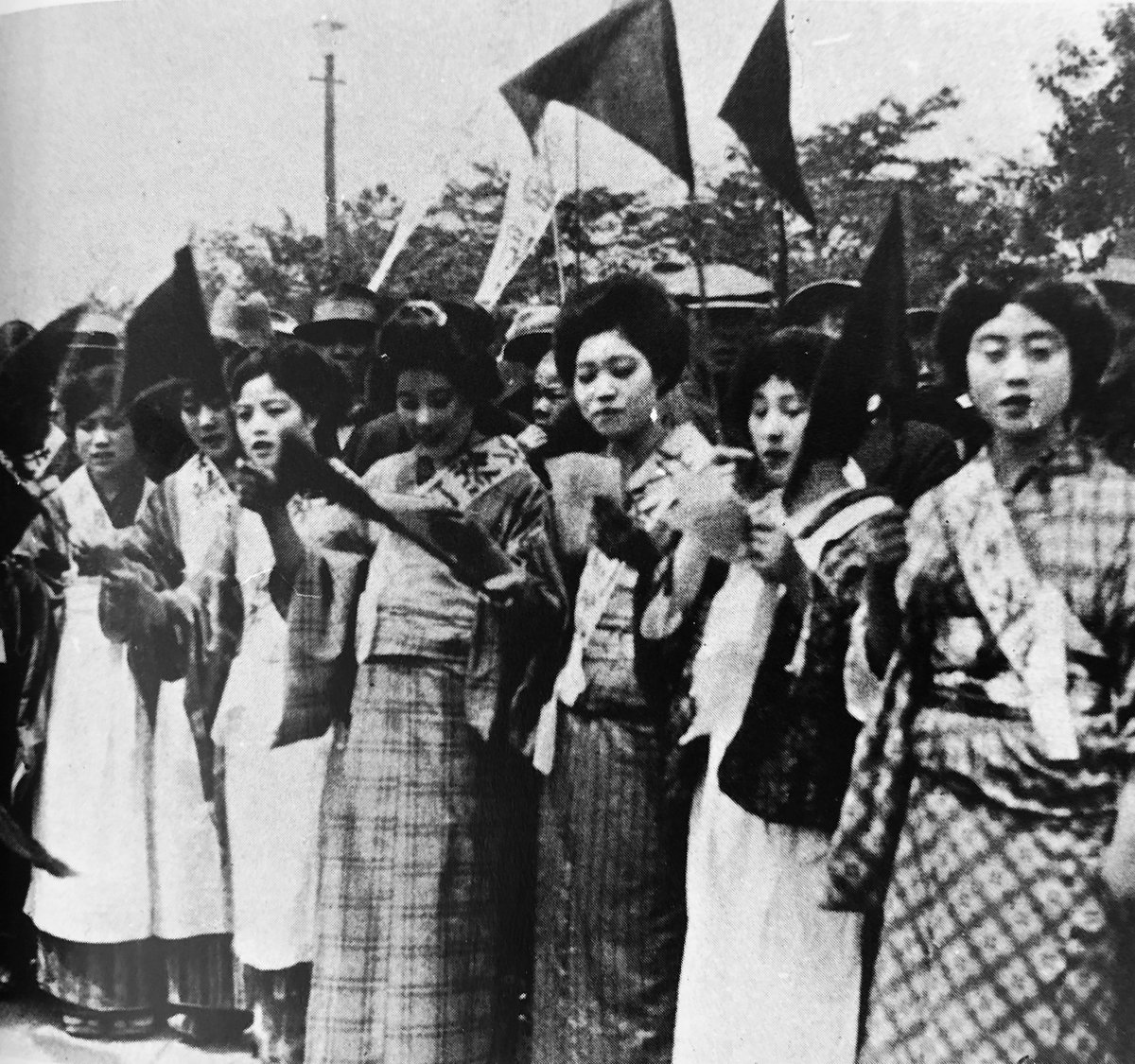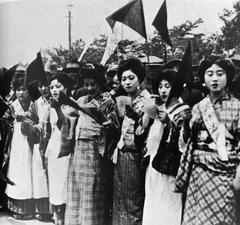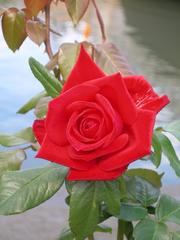
Comprehensive Guide to Visiting Nagai Park Rose Garden in Osaka, Japan
Publication Date: 18/07/2024
Introduction to Nagai Park Rose Garden
Nestled in the vibrant city of Osaka, Japan, Nagai Park Rose Garden (バラ園) is a beloved destination for nature enthusiasts and tourists alike. Established as a symbol of peace and tranquility following World War II, the garden has blossomed into one of Osaka’s most cherished green spaces, reflecting the city’s growth and enduring love for roses. The origins of Nagai Park, and subsequently the Rose Garden, trace back to the influential Nagai family during the Edo period. Over the decades, the garden has undergone significant transformations, from a private estate to a racecourse, and finally into a public park. Today, it stands as a testament to Osaka’s resilience and commitment to creating spaces of beauty and serenity (source).
With approximately 3,700 rose bushes of around 310 different varieties, the garden offers a captivating spectacle of colors and scents. Visitors can explore themed flower beds, arching espaliers, and a serene central pond, making it an ideal spot for relaxation and photography. The garden’s accessibility features, including paved pathways and ramps, ensure that all visitors can enjoy its beauty. Seasonal events and festivals, such as the annual Rose Festival, further enhance the garden’s appeal, fostering a sense of community and connection with nature (source).
Whether visiting during the peak blooming seasons in spring and autumn or exploring the garden’s serene ambiance year-round, Nagai Park Rose Garden promises an unforgettable experience. This comprehensive guide provides essential visitor information, travel tips, and insights into the garden’s history and cultural significance, ensuring a memorable visit for all.
Contents Overview
- Exploring Nagai Park Rose Garden
- Discover the Beauty of Osaka’s Rose Garden
- Visiting Osaka’s Rose Gardens
- Summary and Final Thoughts
- Sources and Further Reading
Exploring Nagai Park Rose Garden
Nagai Park Rose Garden, a beloved green space in Osaka, boasts a history as vibrant as its blooms. Its story intertwines with the park’s development, reflecting the city’s growth and the enduring love for roses.
Early Beginnings and the Legacy of the Nagai Family
The origins of Nagai Park, and subsequently the Rose Garden, can be traced back to the influential Nagai family. During the Edo period, the area that now houses the park was part of the vast estate owned by this prominent family. The Nagai, known for their contributions to the region’s development, left behind a legacy that continues to shape the park’s identity.
From Racecourse to Public Park
In the early 20th century, the land underwent a significant transformation. It was repurposed into a racecourse, marking a shift from a private estate to a public space. This period saw the introduction of leisure activities and entertainment, drawing crowds and adding a new layer to the area’s history.
Birth of a Rose Garden
Following World War II, the racecourse was transformed into Nagai Park, a decision driven by the desire to create a symbol of peace and tranquility amidst the post-war recovery. The Rose Garden, established within the park, became a testament to this aspiration, offering a sanctuary of beauty and serenity.
Expansion and Recognition
Over the decades, the Rose Garden has undergone several expansions and renovations, solidifying its position as a premier rose destination. The addition of new varieties, themed gardens, and improved facilities has enhanced its appeal, attracting visitors from far and wide.
Visiting Information
Visiting Hours
Nagai Park Rose Garden is open daily from 9 AM to 5 PM. However, hours may vary during special events and festivals, so it is advisable to check the official website for the most up-to-date information.
Ticket Prices
Entrance to Nagai Park is free, but certain areas within the Rose Garden may require a small fee, especially during peak blooming seasons and special exhibitions. It is recommended to check online for specific details on ticket prices and seasonal rates.
Accessibility
The park is wheelchair accessible, with paved pathways and ramps ensuring that all visitors can enjoy the beauty of the Rose Garden. There are also restrooms and seating areas available throughout the park.
Travel Tips
- Best Time to Visit: The best time to visit the Nagai Park Rose Garden is during the spring (April to June) and autumn (October to November) when the roses are in full bloom.
- Nearby Attractions: Consider visiting the Osaka Museum of Natural History and the Nagai Botanical Garden, both located within Nagai Park.
- Photography Tips: Early morning and late afternoon provide the best lighting for photography. Don’t forget to explore different angles and close-ups to capture the intricate details of the roses.
Special Events and Festivals
Throughout the year, the Rose Garden hosts various events and festivals, transforming into a vibrant hub of activity. The annual Rose Festival, a highlight of Osaka’s spring calendar, draws huge crowds who come to celebrate the beauty of roses and enjoy the festive atmosphere. These events foster a sense of community and provide opportunities for people to connect with nature and each other.
A Living Legacy
Today, Nagai Park Rose Garden stands as a symbol of Osaka’s resilience, its love for nature, and its commitment to creating spaces for peace and beauty. The garden’s enduring popularity and the continuous efforts to preserve and enhance it ensure that future generations can continue to experience the magic and wonder of this floral paradise.
Discover the Beauty of Osaka’s Rose Garden
Key Attractions and Features
A Symphony of Roses
Boasting approximately 3,700 rose bushes of around 310 different varieties, the garden offers a captivating spectacle of colors and scents. The meticulous arrangement of the roses further enhances their beauty:
- Themed Flower Beds: Explore distinct sections dedicated to specific rose types, colors, or even historical periods.
- Arching Espalier: Walk beneath elegant rose arches, a popular spot for photos, especially during peak bloom.
- Central Pond: A serene pond acts as the heart of the garden, reflecting the vibrant colors and offering a peaceful ambiance.
Notable Rose Varieties
While the garden boasts a diverse collection, some rose varieties stand out for their beauty, fragrance, or historical significance:
- Momochan: This rose, bred in Osaka, is known for its delicate pink hue and sweet fragrance.
- Maria Callas: Named after the renowned opera singer, this rose captivates with its deep crimson color and strong, classic rose scent.
- Peace: A world-famous variety, the Peace rose is celebrated for its large, pale yellow blooms edged with pink, symbolizing hope and unity.
Beyond the Blooms
The Rose Garden offers more than just roses. Enhance your visit with these attractions:
- Rest Areas and Benches: Take a break and soak in the beauty of the surroundings from strategically placed benches and rest areas.
- Fountains and Water Features: The gentle sound of water complements the visual splendor of the roses, creating a truly sensory experience.
- Seasonal Events: Depending on the time of year, you might catch special exhibitions, rose-themed workshops, or illuminations that add a magical touch to the garden.
Visitor Information
Visiting Hours and Tickets
The Rose Garden is open daily from 9:00 AM to 5:00 PM, with extended hours during special events. Entry is free, but some events may require a ticket. Check the official website for the latest information on visiting hours and ticket prices.
Accessibility and Facilities
The Rose Garden is designed for everyone to enjoy:
- Wheelchair Accessibility: Paths are generally wheelchair-friendly, allowing visitors with mobility issues to navigate the garden comfortably.
- Restrooms: Public restrooms are available within Nakanoshima Park for visitor convenience.
- Information Center: Stop by the park’s information center for maps, brochures, and assistance in English and other languages.
Travel Tips
- Best Time to Visit: The garden is at its most beautiful during the peak blooming seasons in spring (May) and autumn (October).
- Nearby Attractions: While in Nakanoshima Park, don’t miss the Osaka Science Museum and the Osaka National Museum of Art.
- Photography Tips: Early morning or late afternoon provides the best lighting for photography. Don’t forget to capture the garden’s highlights, like the central pond and the arching espalier.
Visiting Osaka’s Rose Gardens
Best Time to Visit
Osaka’s rose gardens are a sight to behold at various times of the year, each offering a unique charm:
- Spring (Late April to Mid-May): This is the peak season for roses in Osaka, with gardens bursting with vibrant colors and intoxicating fragrances. Expect larger crowds during this time, especially on weekends.
- Autumn (Mid-October to Early November): While not as abundant as spring, autumn offers a second blooming season for many rose varieties. The cooler weather and changing foliage create a picturesque backdrop for the roses.
- Other Seasons: While roses may not be in full bloom outside of spring and autumn, the gardens remain open and offer a tranquil escape from the city. You can still enjoy the meticulously maintained grounds and other seasonal flowers.
Getting There
Osaka boasts several beautiful rose gardens, each easily accessible by public transport:
- Nakanoshima Park Rose Garden: Located in the heart of Osaka, this garden is a short walk from various stations:
- Subway: Yodoyabashi Station (Midosuji Line) or Kitahama Station (Sakaisuji Line)
- Keihan Train: Naniwabashi Station
- Utsubo Park Rose Garden:
- Subway: Yotsubashi Station (Yotsubashi Line) or Honmachi Station (Midosuji Line)
- Osaka Prefectural Flower Garden: Located a bit further out, this garden requires a combination of train and bus:
- Train: Take the Hankyu Takarazuka Line to Ikeda Station.
- Bus: From Ikeda Station, take the Hankyu Bus bound for “Mayuyama Sancho” and get off at “Manpaku Kinen Koen” (Expo ‘70 Commemorative Park) bus stop.
Hours and Admission
- Hours: Most rose gardens in Osaka are open from around 9:00 AM to 5:00 PM. However, hours may vary depending on the season and the specific garden. It’s always best to check the official website for the most up-to-date information.
- Admission: Many rose gardens in Osaka offer free admission, making them a budget-friendly activity. However, some gardens, like the Osaka Prefectural Flower Garden, may have an entrance fee.
Tips for a Memorable Visit
- Allow Ample Time: To fully appreciate the beauty and tranquility of the rose gardens, allocate at least a couple of hours for your visit. This will give you time to stroll through the gardens, admire the different rose varieties, and capture some memorable photos.
- Pack a Picnic: Many rose gardens offer designated picnic areas where you can relax and enjoy the scenery. Pack a light lunch or snacks to enjoy amidst the fragrant blooms.
- Dress Comfortably: Wear comfortable shoes as you’ll be doing a fair amount of walking. Consider a hat and sunscreen, especially during the warmer months.
- Respect the Roses: Refrain from touching or picking the roses. Admire their beauty from a distance and allow others to enjoy them as well.
- Capture the Moment: Don’t forget your camera! The vibrant colors and intricate details of the roses make for stunning photographs.
- Check for Events: Many rose gardens host special events, such as rose festivals and exhibitions, throughout the year. Check the garden’s website or local event listings to see if any events coincide with your visit.
- Learn About the Roses: Take the time to read the labels accompanying each rose variety. You’ll discover fascinating information about their names, origins, and unique characteristics.
- Combine with Other Attractions: Many rose gardens are located within larger parks or near other attractions. Consider combining your visit with a stroll through the park, a museum visit, or a meal at a nearby restaurant.
Nearby Attractions
Enhance your visit to Osaka’s rose gardens by exploring these nearby attractions:
- Nakanoshima Park: This urban oasis offers scenic walking paths, art museums, and stunning views of the cityscape.
- Osaka Science Museum: Located near Utsubo Park, this interactive museum offers a fascinating exploration of science and technology.
- Osaka Castle: This iconic landmark is a must-visit for any visitor to Osaka. Explore the castle grounds, learn about its history, and enjoy panoramic city views from the top floor.
- Expo ’70 Commemorative Park: Home to the Osaka Prefectural Flower Garden, this expansive park features museums, gardens, and recreational facilities.
Special Events and Guided Tours
Many rose gardens in Osaka host special events such as rose festivals, guided tours, and horticultural workshops. These events offer visitors a deeper insight into the care and cultivation of roses and provide unique opportunities to see rare varieties in bloom.
Photographic Spots
Each rose garden features several picturesque spots perfect for photography. Look for areas with dense rose bushes, water features, and scenic backdrops to capture stunning images.
Summary and Final Thoughts
Nagai Park Rose Garden stands as a living legacy of Osaka’s dedication to creating spaces of natural beauty and tranquility. From its early beginnings as part of the Nagai family’s estate to its transformation into a symbol of peace post-World War II, the garden has continually evolved, reflecting the city’s growth and resilience. Today, it attracts visitors from all over the world, offering a serene escape amidst the urban hustle and bustle.
The garden’s diverse collection of roses, meticulously arranged themed flower beds, and additional features such as rest areas and water features create a sensory feast for visitors. Accessibility options ensure that everyone can enjoy the garden, while seasonal events and festivals provide unique opportunities to connect with nature and the local community. Nearby attractions, such as the Osaka Museum of Natural History and the Nagai Botanical Garden, further enhance the visitor experience (source).
By providing comprehensive visitor information, travel tips, and insights into the garden’s history and cultural significance, this guide aims to help visitors make the most of their trip to Nagai Park Rose Garden. Whether you are a passionate gardener, a nature enthusiast, or simply seeking a moment of peace, Nagai Park Rose Garden offers an unforgettable experience that celebrates the enduring beauty of roses and the spirit of Osaka (source).








































































